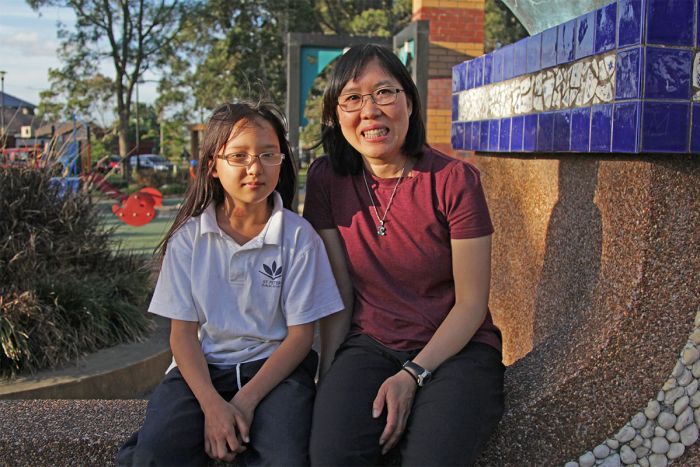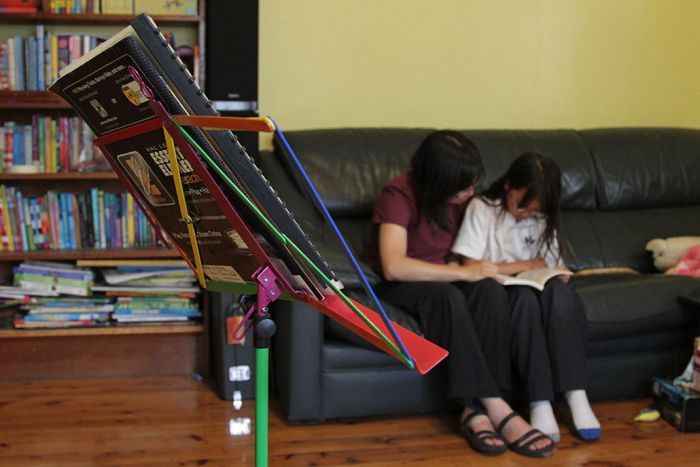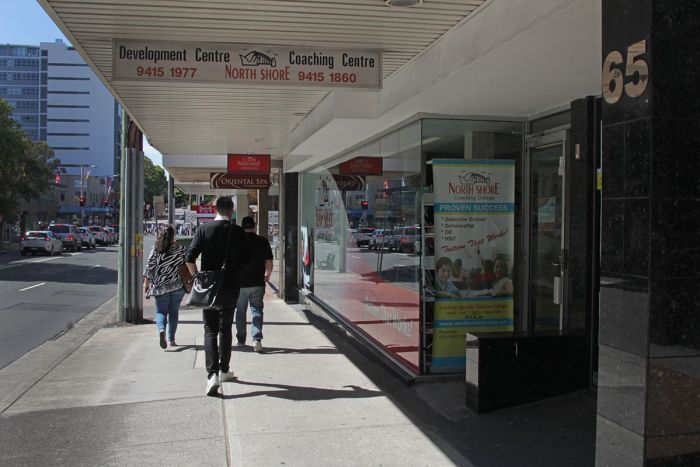Why this Hong Kong-born mother won't send her kids to selective schools
November 26, 2017
Related Story: Selective schools are failing our children. We don't need to build more
Related Story: Are selective schools the best place for gifted students?
The usual teenage angst aside, Hong Kong-born Christina Ho thoroughly enjoyed her formative years spent at a selective high school for academic high achievers.
"The school was great. They certainly encouraged freedom of thought," Dr Ho recalls.
Most of all, she holds her former peers in high regard, and says she learned a lot from them.
Yet Dr Ho, who researches diversity as a senior lecturer in social and political sciences at UTS in Sydney, is decidedly against sending her two children to a selective high school.
The reason? According to her, the ethnic makeup of selective schools now no longer reflects Australian society.

In Dr Ho's graduating class of 1991, Asians were in the minority. Today, there are more than 20 fully selective high schools in NSW and 25 partially selective high schools, and students with an Asian background dominate most public high schools for the gifted and talented.
A disproportionately large majority of these elite institutions are in NSW, and education commentators estimate that some Sydney school populations could be as high as 90 per cent Asian Australian.
For Dr Ho, now aged 43, this racially skewed environment is not what she wants for her kids.
"Ideally, schools are microcosms of society, where children learn everyday multiculturalism in an organic way," she says.
Dr Ho says this is less likely to occur in schools that do not reflect the ethnic or cultural make-up of the wider community.
The schoolyard banter of 'skip' and 'the Asian five'
While there's little evidence that racial tensions exist in the classroom, race is a key factor in how kids see themselves and each other in selective schools.
According to Trissha Varman, a 15-year-old selective school student who was born in Malaysia, south Asian kids tend to hang out in "curry groups". Alissa, 17, who would rather be known by her first name, said a group dominated by white kids would be referred to as "skips", short for Skippy the bush kangaroo.
Dr Ho points to terms like "the Asian five" — a cluster of maths-heavy subjects including science — which are contrasted against "white subjects", mainly the humanities.
Activities such as debating and sport are also lumped together as "white". It is a kind of schoolyard othering that troubles her.
"As someone from a migrant background growing up in Australia, I wanted to fit in more than anything else. I didn't want to be defined as racially different," she says.
She cautions that seeing the world through the lens of race may lead to unhealthy divisions, which is why she wants to encourage a wider discussions about race, ethnicity, and education.
"I think race is there. It's visible already and people don't know how to talk about it," she says.
"One of the things I want to do with my research is provide an alternative way of talking about these kinds of issues. So it is not just about race, it is not just about culture, it is about government policy."
The rise of coaching colleges
In recent decades, Australia's immigration policy has shifted, to rates skills, wealth and educational background over other factors like family reunion.
In education, too, government policies have shifted from more broad-based comprehensive models to a hierarchical, competitive system based on NAPLAN testing.
Dr Ho says the overall result is that Australia has hyper-selected migrants from countries like India, China and South Korea, who are on average more highly educated than Australians.
According to her, these aspirational migrants value education as the key to a successful future for their children, and to gain a competitive edge, they're more likely to encourage attendance at private coaching colleges and tutoring.

In fact, extra-curricular academic support is now the norm for any family wanting their child to gain entry into any of the prestigious and public, selective programs around Australia. Unsurprisingly, the private tutoring industry has almost doubled in the past decade.
This trend is now a major cause of tension, especially in NSW. Coaching and tutoring is expensive, and can lead to inequities. But mostly, it's considered unduly taxing for kids.
"I've had people say to me that this is basically child abuse, what these Asian parents are doing to their kids," Dr Ho says.
"There is this growing racialised hostility that I'm seeing, and I think that there are some valid concerns, certainly. But there's also some racism there."
Swimming against the tide
Although she is a highly successful beneficiary of the selective school system, Dr Ho is not so sure if the system is a good idea any more.
"I think that socially, selective schools are adding to the sort of inequality that we see in education," she says.
She advocates shifting public resources away from programs that benefit a select minority of smart kids into comprehensive public schools that benefit all students.
But so far, she seems to be swimming against the tide. The trend towards more selective schools is currently intensifying in nearly all states.
What about her kids? Doesn't she want them to have the competitive advantage and benefits that she enjoyed as an academic high achiever in a selective high school?
"My kids are in a very supportive family environment," she says.
"They have parents who are well educated and well connected."
Dr Ho and her partner reject the narrow, results-oriented methods promoted by coaching colleges.
"I want learning to be an intrinsically interesting experience for them, that they can have autonomy over," she says.
"And we're not going to let our kids fail!"
Dr Ho's children are now aged five and nine. By the time they reach high school, will our education system be even more hierarchical, stressful, competitive and racially segregated?
And what kind of Australian society will kids who graduate from such a system create?